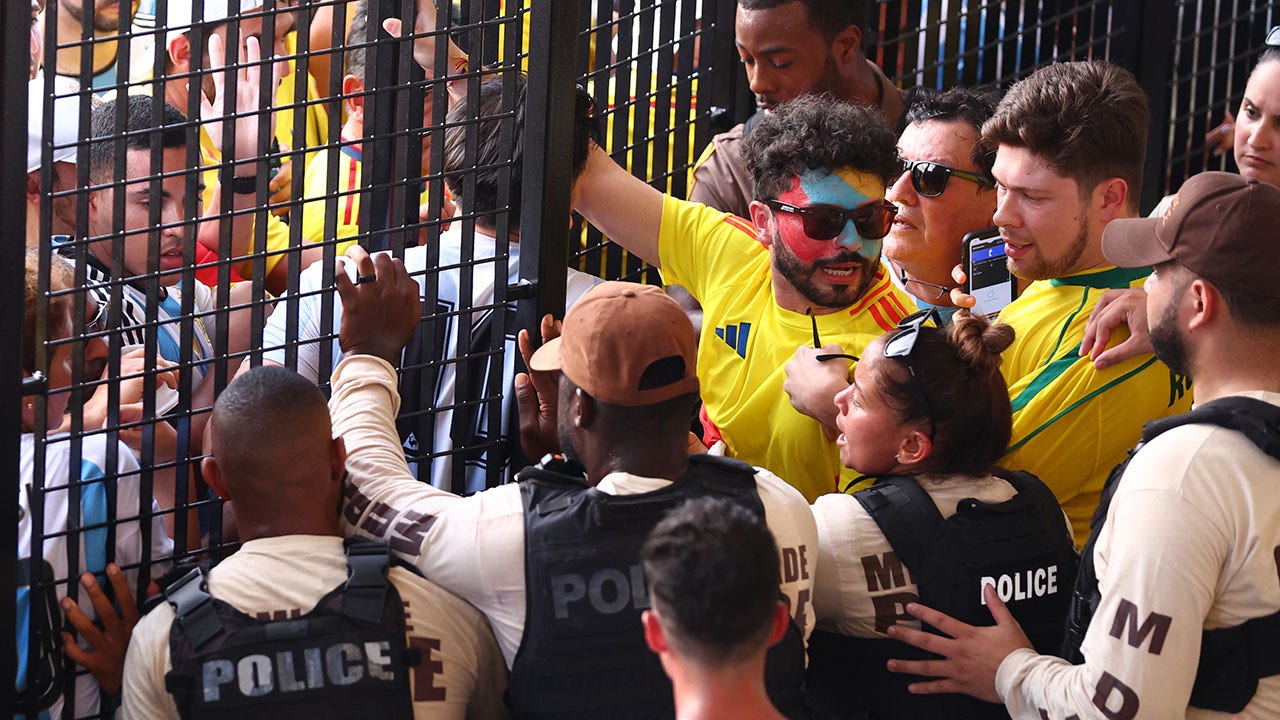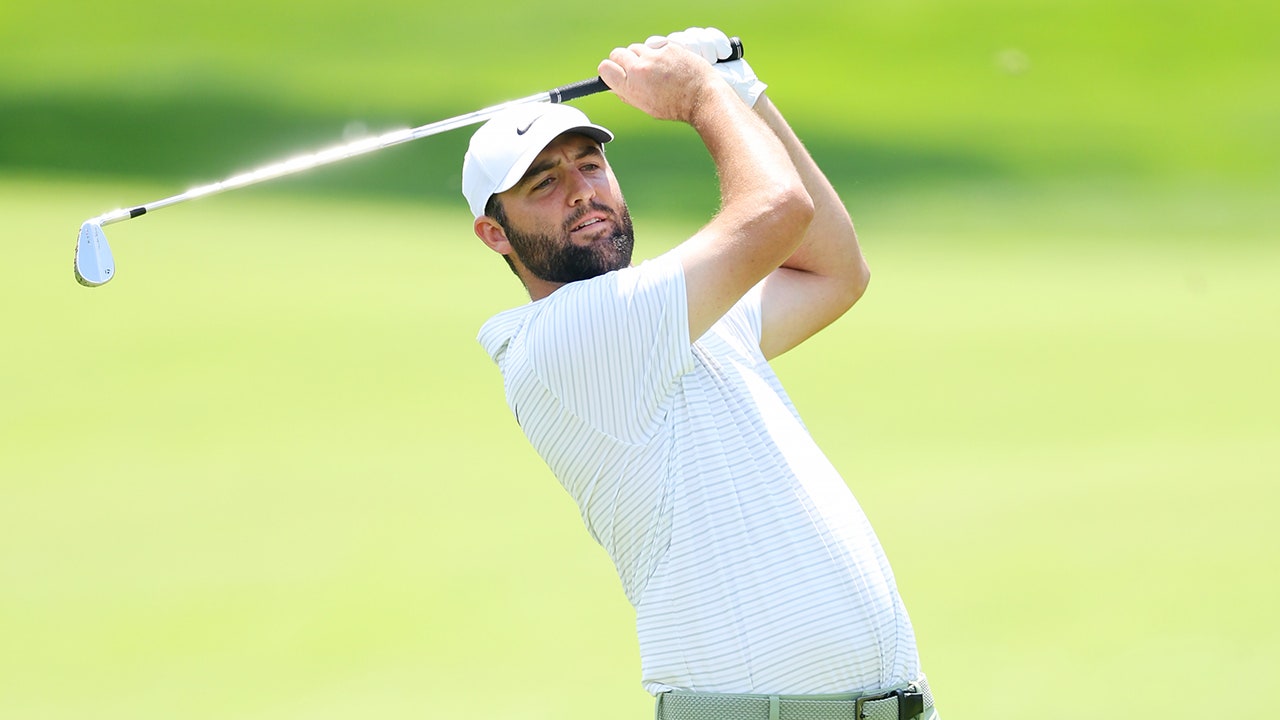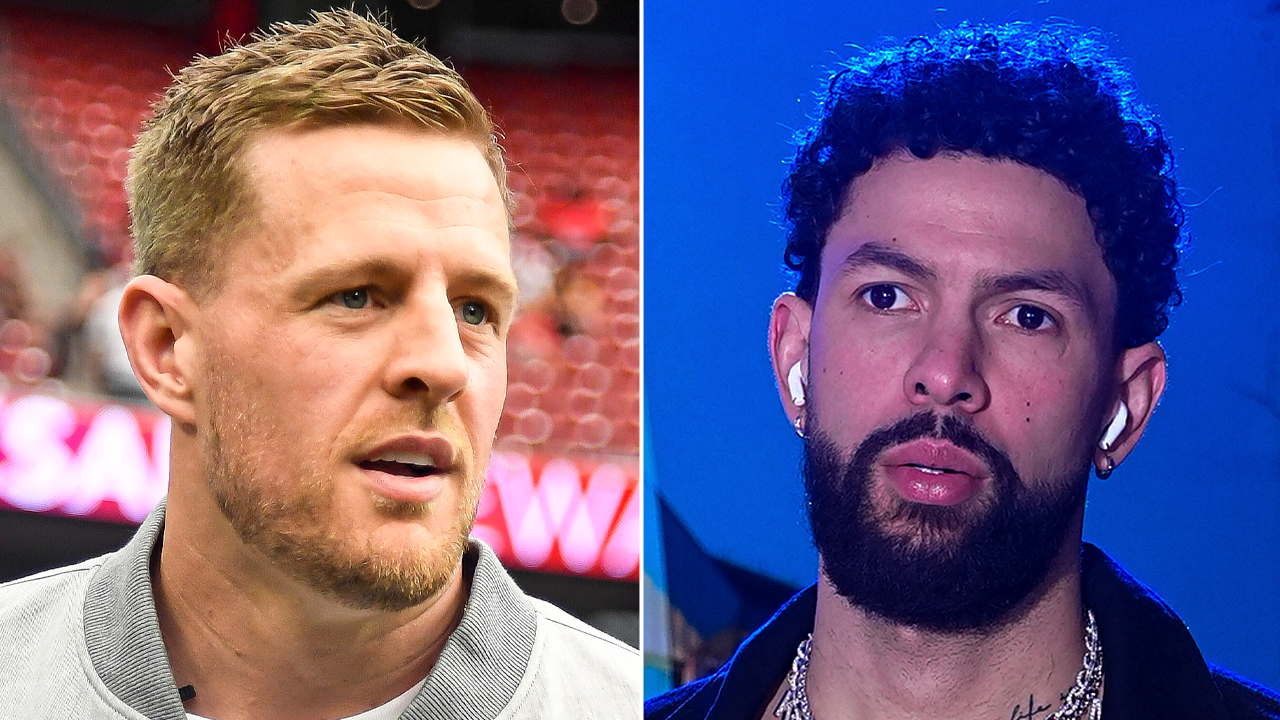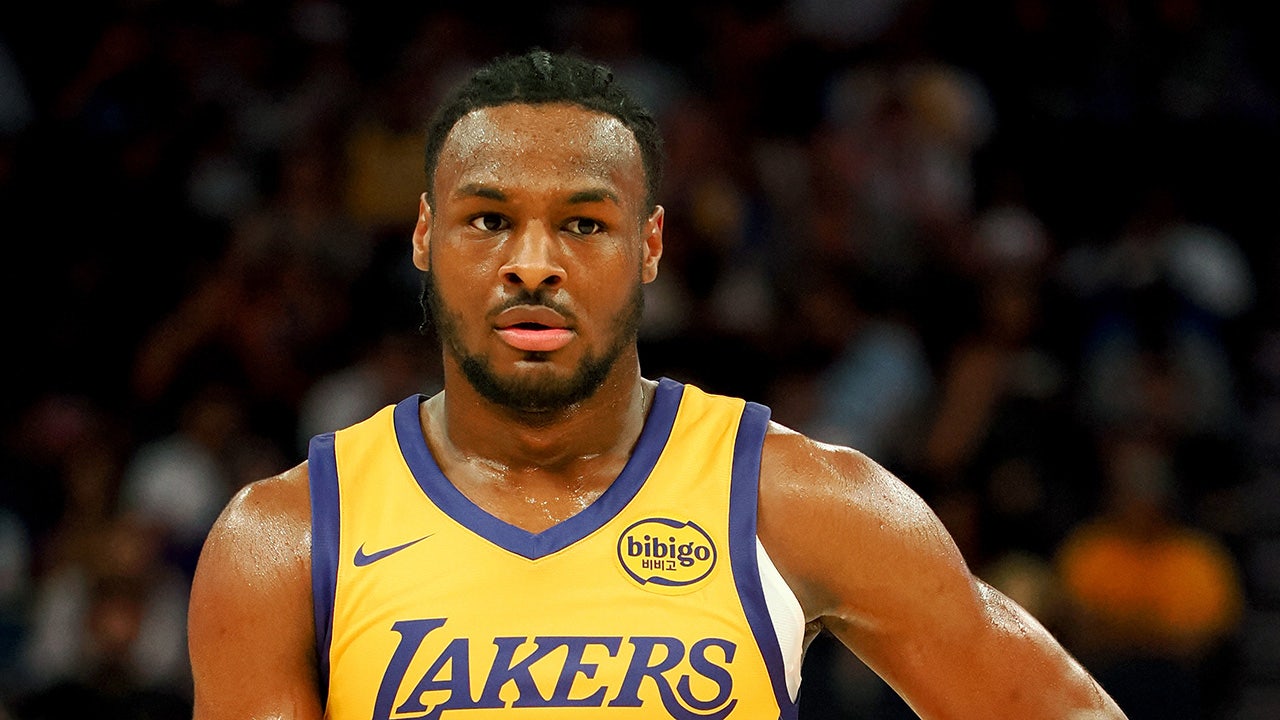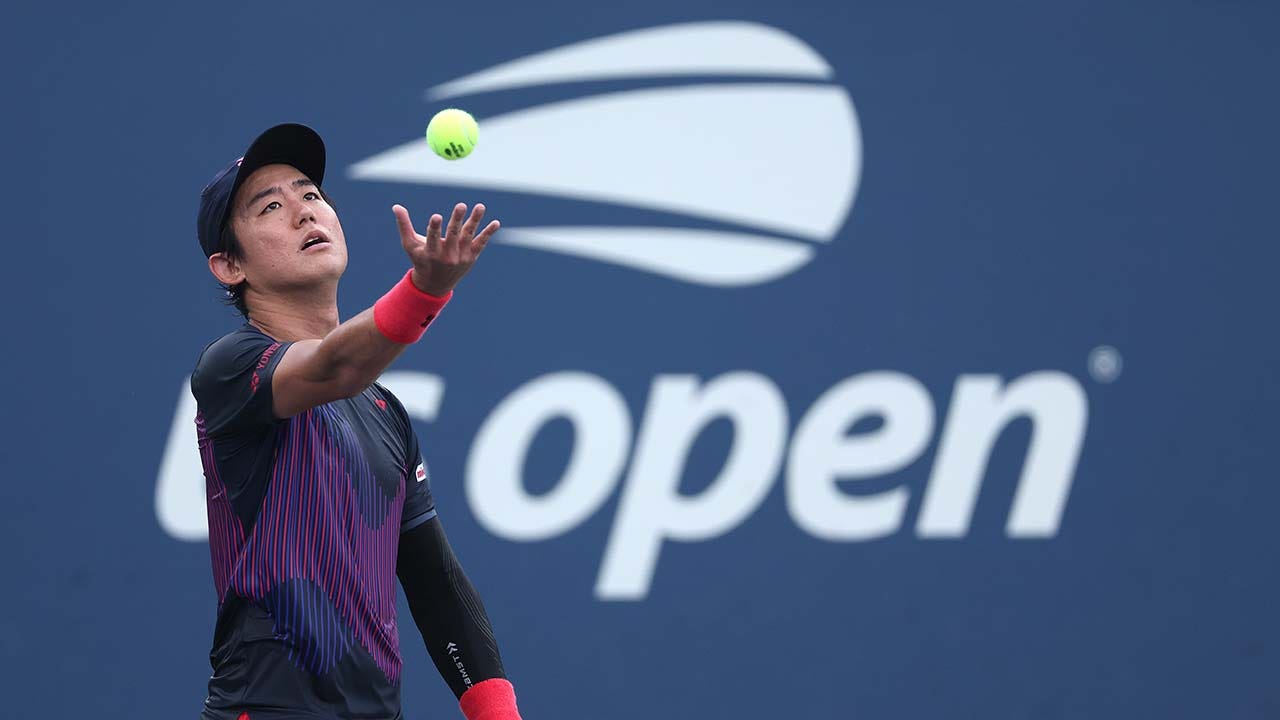As the New York Yankees and Los Angeles Dodgers meet in the World Series, it’s not just a matchup of the teams with the most American League and National League pennants, respectively.
It also features two of the most iconic and best-selling caps in the world.
The Yankees and Dodgers caps represent more than just the cities where their teams play; they are cultural fixtures. A flashpoint for baseball caps becoming a lifestyle piece happened in 1996, when filmmaker Spike Lee convinced apparel brand New Era Cap Co. to make him a red Yankees cap to match the red jacket he was wearing to Game 3 of the 1996 World Series between the Yankees and Atlanta Braves.
The 1996 Spike Lee #Yankees World Series hat is back!!! https://t.co/rELOOzpeMm pic.twitter.com/Y3QLfjjVCZ
— HAT CLUB (@HatClub) May 19, 2016
New Era, which makes caps for all of the major sports leagues, is celebrating 70 years of the 59Fifty, the fitted model that will be worn by both teams in the World Series. New Era has a webpage featuring its best-selling MLB caps, a site that reminds baseball fans that anything with a Yankees or Dodgers logo is still very popular — regardless of the color or style of the cap.
And with the multiple cap variations, there is tons of history on what was once just a piece of the uniform now viewed as a fashionable wardrobe accessory commonplace to society.
There have been multiple versions of baseball caps over the years, from snapback to adjustable. The fitted cap, however, holds a special place in sports and culture.
The first fitted caps date back to the 1930s and were known as the Brooklyn-style cap, according to New Era brand historian Jim Wannemacher. At the time, there was no uniformity in baseball caps. Harold Koch, the son of New Era founder Ehrhardt Koch, sought to change that in 1934. Cleveland became the first MLB franchise New Era made caps for, but Koch wanted to expand and provide caps for more teams.
“He kind of scoured and found that the most popular one at the time was this Brooklyn-style cap,” Wannemacher said. “It also matched from a pattern standpoint and a production standpoint very much with what we were doing with all of our other type of hats like the Gatsby and the paperboy. Very similar patterning and construction, so it seemed like it was a pretty easy way to redevelop the patterns.”
The on-field cap, the 59Fifty, made its debut in 1954. Smith said there have been performance enhancements over the years, but the premise of the cap has remained the same. The caps were only for baseball players until 44 years ago.

Baseball caps are popular worldwide. This shop in Barcelona features a variety of Yankees and Dodgers caps. (Jeffrey Greenberg / Universal Images Group via Getty Images)
Once fans finally were able to order them, the overwhelming demand was a boost to business. New Era reached an exclusive deal with MLB in 1993 (the MLB logo was then added to the back of the cap), but there was still a desire to spark more interest and sales.
That’s where Lee’s request became important. Chris Koch had been the company’s president since 1993. Smith said the conversation between Lee and Koch, who initially thought the call from Lee was a joke, was a pivotal moment in the history of the brand.
“(Koch said) if we can do a red one, a pink one — all the different colors, materials, you name it — that opens up a whole different market for us. Maybe there’s more revenue there,” Wannemacher said. “And they were like, ‘Yes, let’s do it,’ so we renegotiated the license agreement to add in this secondary market kind of stuff.”
Since then, the creation of alternate-colored caps have made it possible for fans of any team to rep their squad in any outfit. The influence of hip-hop and the rise of the sneaker culture are factors in why the fitted cap has become a symbol of style worldwide. They’re worn to sporting events and not as a part of a sporting event. They’re worn by celebrities on the red carpet — maybe just as an accessory to match new sneakers.
Alex Mitchell was a startup collector sharing his caps on social media around 2012. He met designer Len Kori online, and they collaborated to make custom apparel. Their company, Thrill, now specializes in creating unique caps with connections to San Francisco. By 2016, their caps were being sold in retail store Hat Club.
“It’s what the pros wear,” Mitchell said. “With so many options, there are different colors so passionate. I think it’s an opportunity to have something that maybe nobody else has. … We do custom logos and designs that tell stories.”
Caps weren’t just about mimicking what was seen on the baseball field. Wearing a cap nowadays doesn’t necessarily equate to fandom for a team.
For some, it’s about copying the style of a celebrity. Hip-hop mogul and Brooklyn native Jay-Z’s once had a look where the Yankees fitted cap was a staple of his apparel. Jay-Z even acknowledged the popularity on his hit song “Empire State of Mind” with Alicia Keys:
“I made the Yankee hat more famous than a Yankee can.”
The Yankees cap is known internationally — even by those who have no idea who Aaron Judge is.
“I think when you get outside of the U.S., people may not fully understand the details about the sport,” said Tom Keough, New Era director of business and marketing development – lifestyle. “But they see that as representing hip hop and representing America and standing for New York City, which is a place a lot of people globally want to travel to. I think the influence is definitely driven from off the field as much as it is on the field.”
The Dodgers cap represents Los Angeles and the West Coast, and rapper/actor/producer Ice Cube, an L.A. native who also founded the Big3, has been seeing wearing the cap for decades. He was part of a Dodgers anthem that came out in 2013 but resurfaced after Los Angeles won the 2020 World Series, a track that included DJ Felli Fel, Warren G, Tyga, Ty Dolla $ign, Chino XL and Problem:
“One big swing to bring L.A. the ring.”
Game ready! @icecube brought his mitt tonight: pic.twitter.com/xZlwIsjIGW
— Los Angeles Dodgers (@Dodgers) May 28, 2014
In Japan, Dodgers caps are becoming harder to come by with the popularity of superstar Shohei Ohtani driving up the costs of gear.
Set Free Richardson directed the documentary “The 5950 Story,” a documentary that focuses on the evolution of the cap. Richardson calls the fitted cap the “modern-day crown.”
“When you think hip-hop, you think of your brand and repping your city, repping your block,” Richardson said. “You look at Jay-Z wearing the Yankees hat. You look at Nas wearing the Mets hat; he’s from Queens. Big Boi wearing the ATL (hat), Nelly wearing St. Louis … there are a lot of the guys who were from these areas, towns and states who repped New Era baseball hats to rep their city all the time.
“That trend just took off and connected with people more and more. But even before, (DJ) Jazzy Jeff was always wearing the Phillies hat.”
Richardson noted he owned plenty of Starter snapback caps before the 59Fifty became the rage. Those caps also a part of hip-hop culture, and artists helped popularize them.
Rap group N.W.A came to prominence in the late 1980s and was known to wear primarily black gear that included a lot of Los Angeles Raiders and Los Angeles Kings caps. Eazy-E and Dr. Dre wore black-and-white Chicago White Sox caps in the early 1990s and made them popular with those who had never been to Chicago’s South Side. Outside of hip-hop, Tom Selleck is remembered for his Detroit Tigers cap on the 1980s television series “Magnum P.I.”
Chuck D of Rock and Roll Hall of Fame group Public Enemy said he’s a New York Jets fan, but he wanted a black cap to wear with the black outfits he wore on stage while performing. In the 1980s, black Jets caps were not being sold, so he went with the Raiders instead.
“I wore Raiders because it was an homage to Oakland, because that’s where the Black Panthers were from,” he said. “And the Raiders were always rebels.”

This 1988 photo of Public Enemy’s Chuck D and Flavor Flav shows Chuck D’s appreciation for the Raiders gear. (Raymond Boyd / Getty Images)
Caps weren’t only about identifying where a person was from. In some areas, caps were subtle messages, sometimes unrecognizable. They have been worn to designate the first initial of a first or last name. They have been worn to identify gang or neighborhood affiliations. They have even been worn to show support for causes, even if a person isn’t a fan of that particular team.
But in many cases, what’s stitched on a cap isn’t that deep. Branding consultant Victoria Jacobi works with NBA athletes like Carmelo Anthony, Donovan Mitchell and Devin Booker — all of whom make caps part of their daily wardrobe — and asked about their favorites.
Booker wears a Tigers cap because he is from Grand Rapids, Mich. Mitchell is fond of his New York Mets caps, simply because he’s a fan. Anthony caused a stir in 2016, when he wore a split cap where half of the logo represented the Yankees while the other half of the logo represented the Mets.
Carmelo Anthony with the half Yankees half Mets hat 😂 pic.twitter.com/IK1Tzst4Yb
— Athlete Action™ (@AthleteAction) May 28, 2016
“That’s the good thing about these hats where they give options. You can get whatever makes you happy,” Jacobi said. “You have options for anything and everything. I think it’s always an interesting fashion thing, especially Melo doing what he does with it. It’s kind of like he doesn’t care.”
A cap’s versatility can make it popular. Many athletes wear a suit at their respective drafts, and the first thing they are given is a cap of the team that selects them. Some now wear baseball hats casually, or with suits.
The variety in caps stretches beyond sports teams. The fitted cap can represent unique designs and can be sought after by collectors looking for a distinctive look. New Era now makes caps that can sell for thousands of dollars on the internet.
Incredible to think how far caps have come, considering they once were only part of a baseball uniform. They are seen on everyone, in every scenario.
But sports, however, always will be a part of the cap’s story — the fitted cap, in particular.
“There’s just so many more options than sports,” Mitchell said.
(Top photos: Peter Joneleit and David J. Griffin / Icon Sportswire via Getty Images)

